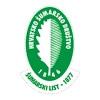
DIGITALNA ARHIVA ŠUMARSKOG LISTA
prilagođeno pretraživanje po punom tekstu
| ŠUMARSKI LIST 1-2/1966 str. 11 <-- 11 --> PDF |
Such investigations are becoming more and more topical, and their success naturally depends on the extent of development of forest tree improvement in individual countries. Thus, for instance, in the report of the School of Forestry, North Carolina State College, for the year 1963, it is mentioned that in a few years it will be possible to determine a selection index by means of which it will be possible to determine much more accurately the value of a selected superior tree to serve as a parent for the seed orchard. More has been done in this direction with coniferous than with breadleaved species. The tropical species have had the least attention. At present we do not have at our disposal selection indices based on progeny tests of plus trees. Therefore it is necessary to develop selection methods based on mathematical calculations and indices, on the basis of which the assessment of trees will be srfer and the subjective factor eliminated. Cec h (8) came to the same conclusion on the basis of a comparison of 5 systems for the selection of superior trees used in the Southern States of the U.S.A. On the basis of his results he concludes that the system is not so important as the estimator, and therefore he considers the numerical system to be better than the less objective descriptive systems. The attempt by Douglas s (10) to work out a method of selection of Japanese larch trees which are superior in wood volume production is most interesting. This selection method is based on the ratio of tree volume to crown volume. In previous methods for the selection of superior trees there is a lack of connection with the stand mean, which is necessary, a Douglas s says, to predict the degree of improvement to be expected. It is clear that a final evaluation of the superiority of trees would have to be based on testing the heritability of this property. Such a selection method, when established in detail, will surely mean a pace ahead compared with these based on the volume of the selected tree in relation to neighbouring trees, or when taken as the largest tree of a number of trees or the tree displaying the largest volume increment or some other good characteristics. Growth rate estimation in the selection of southern Pines in the U.S.A. as described by Brow n and Goddar d (4) also merits discussian. According to them, assessment of growth rate in even-aged stands should be based on the ratio basal-area increase to crown size (length x mean radius). Rudolp h (35) recommends use of the ratio of d-h (square of diameter b.h. x tree height) to D2L (square of crown diameter x crown length) for tree evaluation. By plotting these data on a coordinate system it is possible to construct curves for average and plus trees. The most reliable results from the use of this system are obtained from estimates of trees in even-aged stands. We should continue such work toward early development of reliable indices for selection of plus trees, both in eve-aged and selection forests. Clearly success will be greatest in an even-aged stand where spacing between trees is equal and the site is of equal quality, and if the selection is made among trees belonging to the same diameter class. 3. SELECTION FOR ONE, TWO OR MORE CHARACTERS Selection of plus trees will be much more successful if it is made for one or two characters (6, 36, 40). The difficulty and the possibility of errors increase in geometric ratio to the increase of the number of characters, except if these |